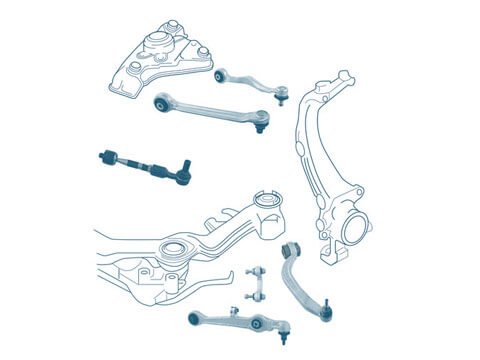Power Steering
Power steering provides better vehicle handling without the driver having to exert too much effort. A distinction is made between electric and hydraulic power steering.
Function
These days, motorists expect the utmost in precision when steering and manoeuvring their  vehicle. Intelligent assistance systems make it possible to achieve a perfect balance between handling and vehicle dynamics. Modern vehicles are fitted with so-called power steering systems to minimise the effort required on steering. A distinction is made between electric and hydraulic power steering.
vehicle. Intelligent assistance systems make it possible to achieve a perfect balance between handling and vehicle dynamics. Modern vehicles are fitted with so-called power steering systems to minimise the effort required on steering. A distinction is made between electric and hydraulic power steering.
Electric and hydraulic power steering
Power steering is a feature of nearly all modern vehicles. This actively assists the driver when steering and enhances both comfort and safety. Using a hydraulic pump or an electric motor, it boosts the force applied by the driver. Modern electric power steering systems are superior to hydraulic power steering in a variety of ways. They operate with an electronically controlled electric motor instead of the hydraulic system. The steering mechanism is linked to the electronic system and is based on the rack-and-pinion steering principle, which has proven to be the ideal concept for power steering to this day. A sophisticated system keeps operation simple:
- As soon as the driver turns the steering wheel, sensors register the corresponding steering torque and the steering velocity with absolute precision.
- The data registered are conveyed to the control unit as an electrical signal within fractions of a second.
- The control unit works out the steering assistance required and then controls the servomotor on the basis of the calculated results.
Safety
Vehicle manufacturers create a link between modern power steering systems and stability systems (e.g. ABS, ESP etc.) by way of an electronic interface. As a result, vehicles are much easier to handle even in difficult situations. In the unlikely event of failure of the electrical system, vehicles with electromechanical steering can still be controlled thanks to the mechanical connection between the steering wheel and the steered wheels. In this way the steering system can satisfy the most demanding safety requirements.
Value retention
With no fluid and no hydraulics, electric power steering is absolutely maintenance-free. A diagnostic system also permits digital checking of all functions.
Protection of the environment
Electric steering is far superior to hydraulic power steering in terms of efficiency. It uses 90 per cent less energy than hydraulic systems. This is due to the fact that energy is only required when steering action is actually taking place. What's more, these power steering systems have no need of a steering valve, steering pump, fluid reservoir, high-pressure hoses or hydraulic fluid and are thus not as heavy. All these factors help to reduce fuel consumption and emissions.






